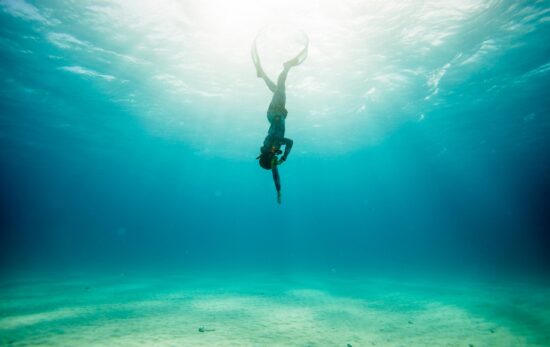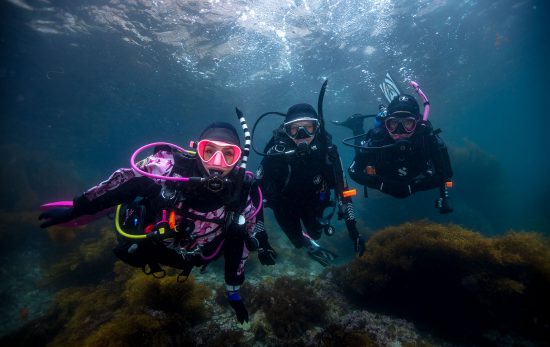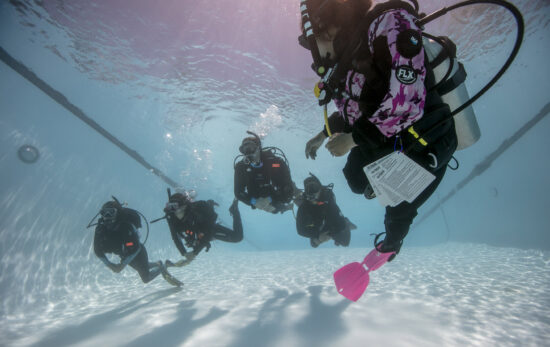Kelp forest ecosystems are underwater areas with a high kelp density, covering a large part of the world’s coastlines. Smaller areas of anchored kelp are called kelp beds. They are recognized as one of the most productive and dynamic ecosystems on Earth.
Kelp Forests are formed in shallow water by the dense growth of several species known as kelps. Though they look like plants, kelps are massive brown algae. Some species can reach heights (underwater) of 150 feet (45 m), and under ideal physical conditions, kelp can grow 18 inches (45 cm) in a single day! As a result of this incredible growth, kelp forests can develop very quickly in areas where they did not previously exist.
Kelp thrives in cold, nutrient-rich waters, and they require shallow, relatively clear water. Kelp forest ecosystems do not overlap with coral reefs, mangrove forests, and warm-water seagrass beds because they generally live further from the tropical waters favored by these other underwater ecosystems.
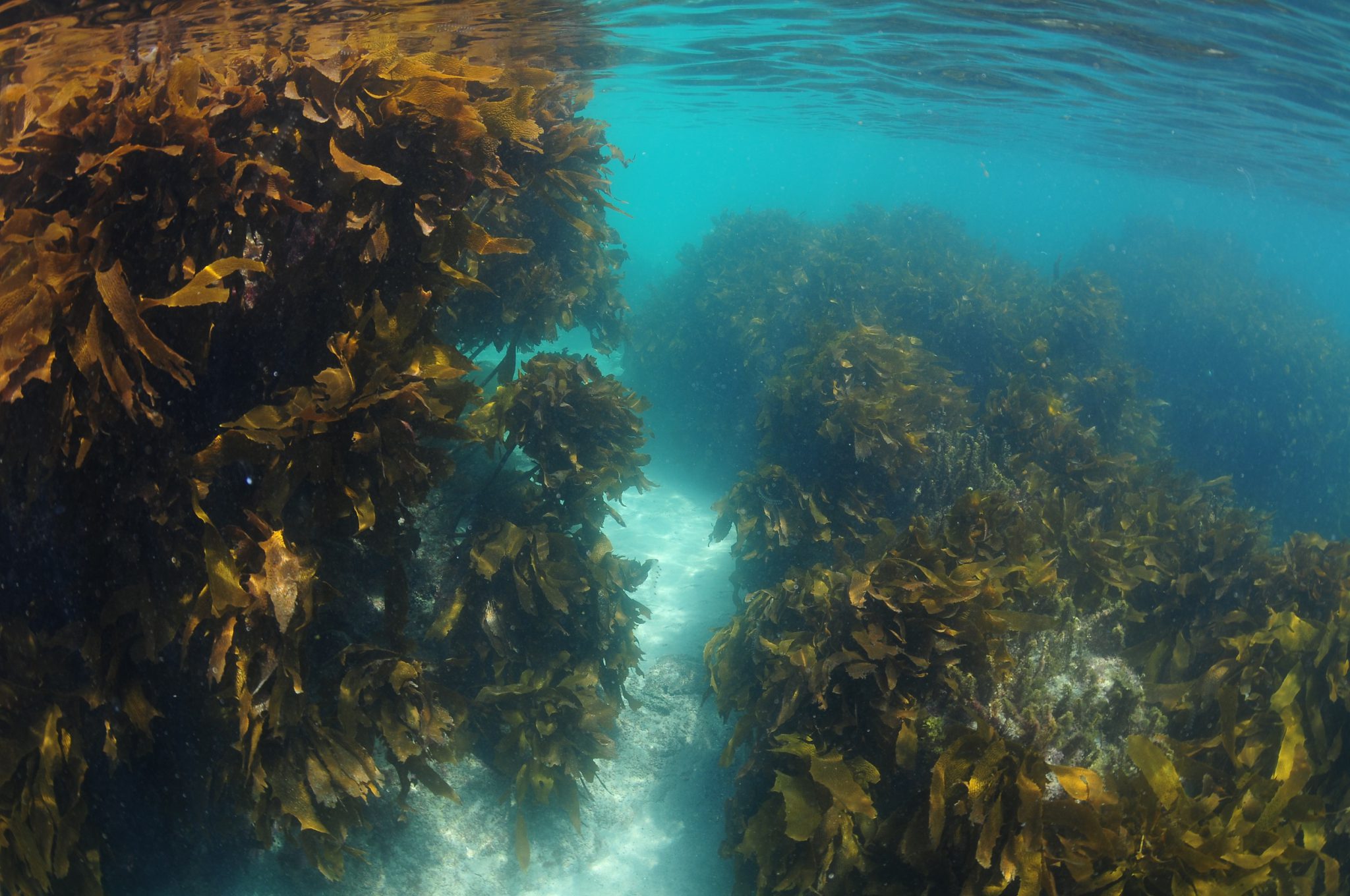
Kelp Forest Ecosystems and Marine Life
Kelp forests provide important underwater habitats to (up to) thousands of species of invertebrates, fishes, and other algae. Some large predators, including sharks and marine mammals, hunt in the corridors that form in kelp forests between rows of individual plants. Some species spawn in kelp forests or use kelp forests as nurseries for their juveniles.
Threats to Kelp Forest Ecosystems
Destructive fishing practices, coastal pollution, and accidental damage caused by boat entanglement negatively affect kelp forests. Marine Protected Areas (MPA’s) have been created to protect kelp forests from excessive use or harm from other causes.
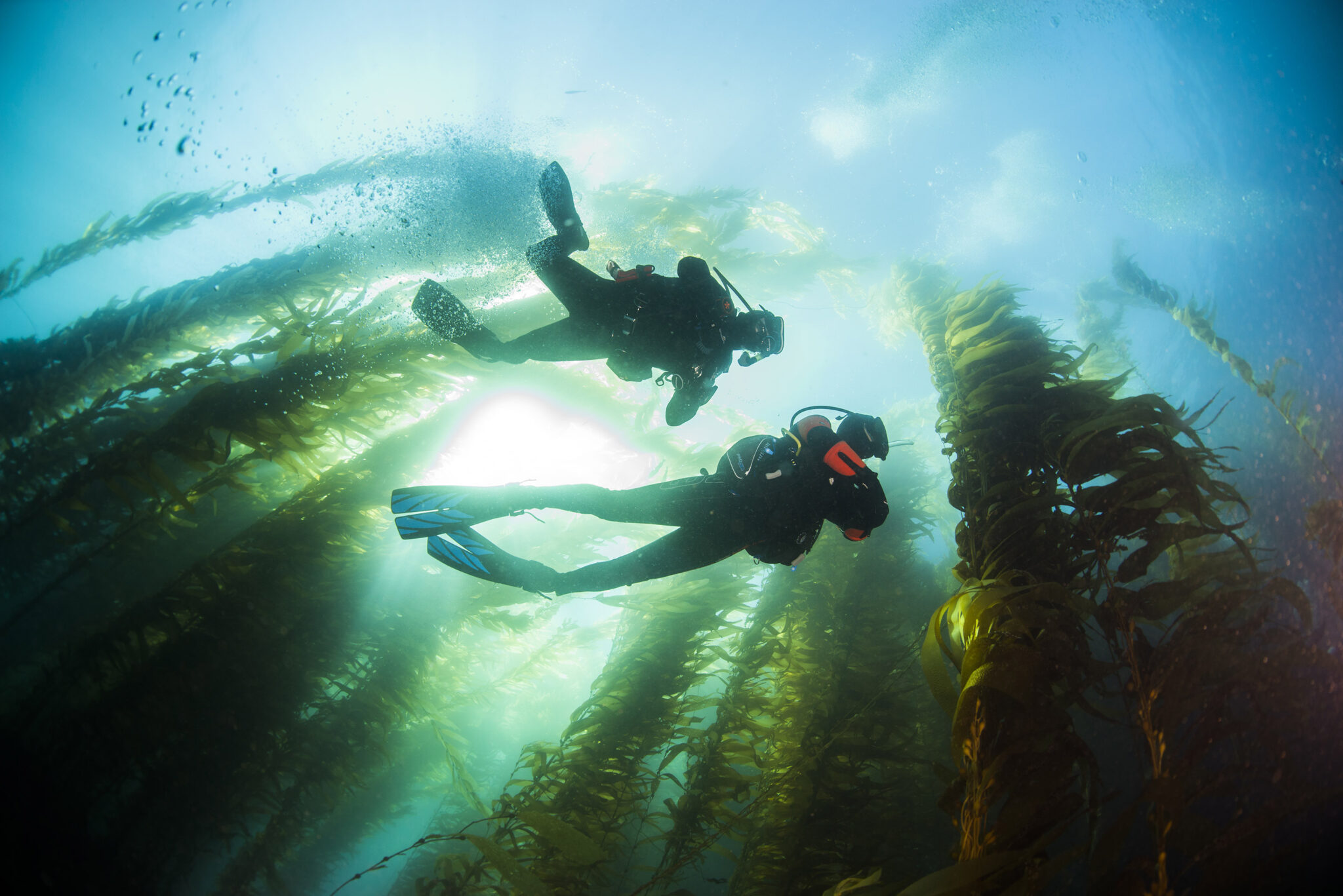
The Kelp Restoration Project
The Giant Kelp Restoration Project recruits and teaches divers to protect and restore kelp in Monterey Bay, California. Besides preserving Monterey’s famed kelp forests, because kelp absorbs large amounts of CO2, this effort directly addresses climate change at the same time. Their mission is to protect and actively restore California’s kelp forests.
Join the next Kelp Restoration Meetup here.
Diving in a Kelp Forest Ecosystem
Diving in kelp is a spectacular experience that many kelp divers compare to diving through a forest of exceptionally tall trees. This combination allows these giant stalks of algae to flourish. Kelp diving often requires a drysuit or thick wetsuit and hood as you’ll find kelp forests in colder and temperate waters, shallow bottoms, and decreased sunlight. The most famous regions for diving in massive kelp forest ecosystems include California, England, New Zealand, Canada, and South Africa.
Check out the PADI Underwater Naturalist Specialty Course if you’d like to know more about different underwater ecosystems.
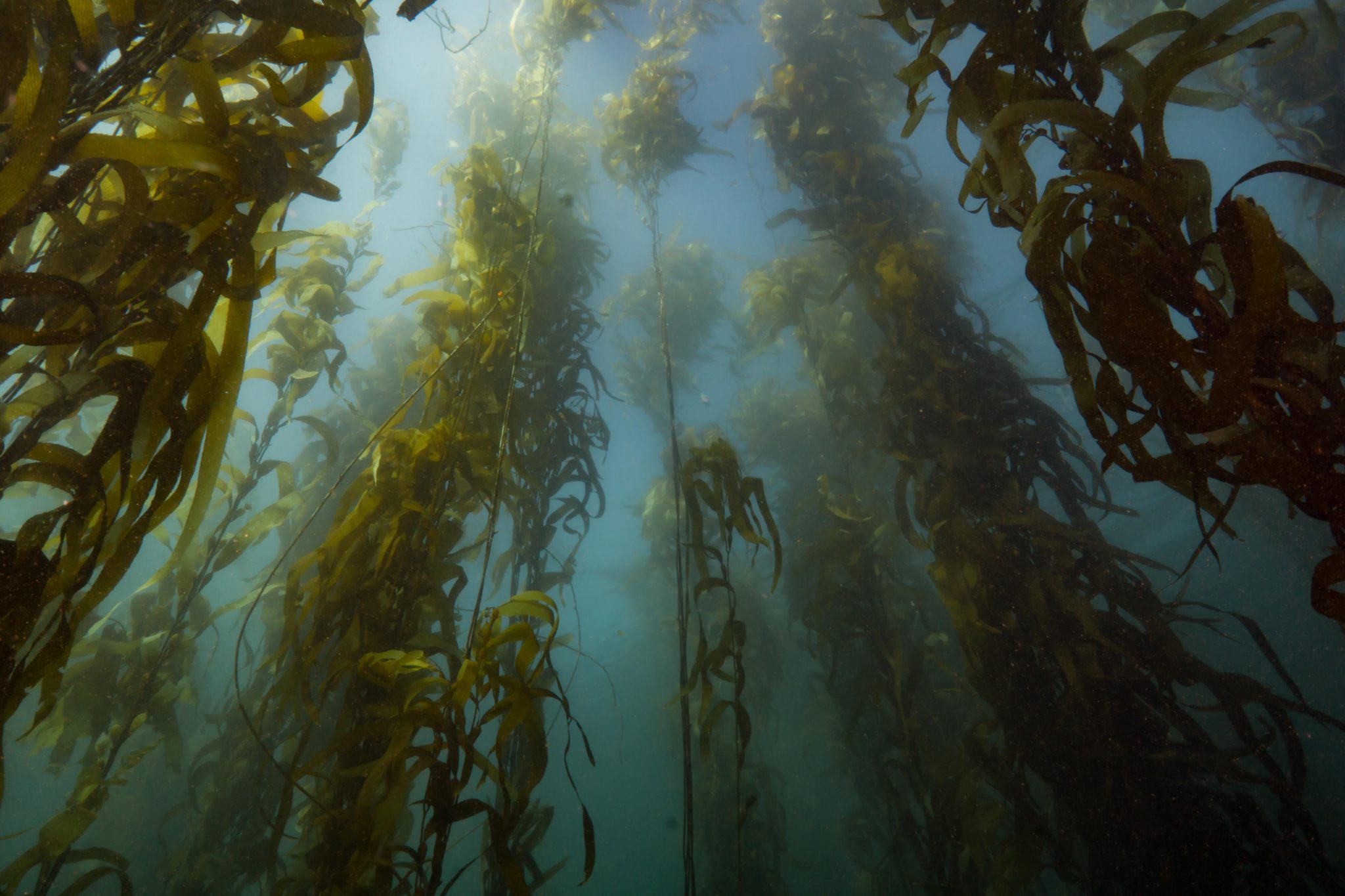
Facts about Kelp Forest Ecosystems
- Kelps are not plants, but relatively massive brown algae and many different kelp species make up kelp forests.
- Some kelp species can measure up to 150 feet/45meters long. If living in ideal physical conditions, kelp can grow 18 inches (45 cm) daily.
- Together, kelp forests cover over 20% of the world’s coastlines – which equals about 570,000 square miles.
- Kelp forests can calm stormy waters. A kelp forest can help put the brakes on incoming waves. As waves roll over a kelp forest, the densely-packed seaweed creates drag, sapping some of the wave’s energy as it passes through – which also helps slow coastline erosion.
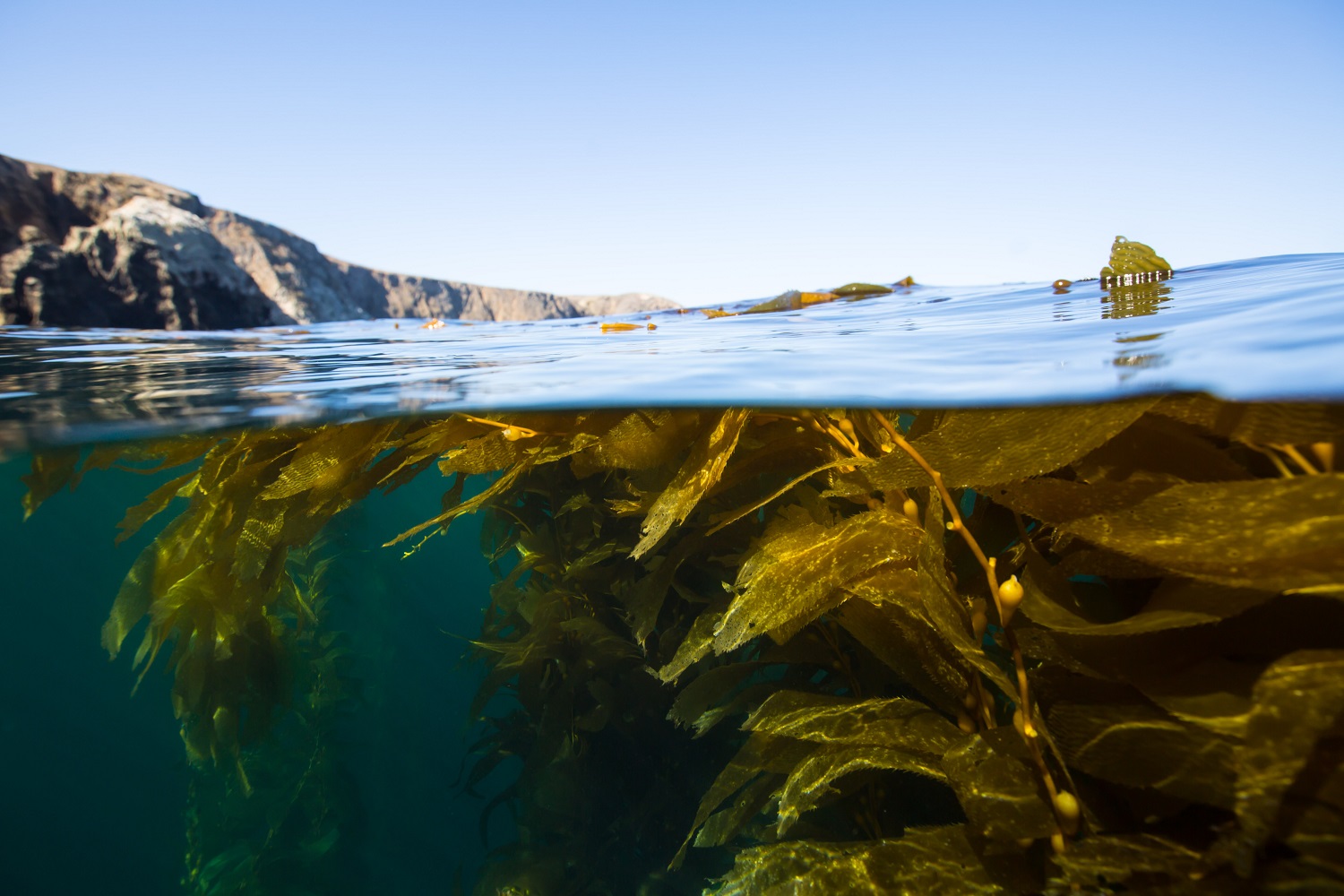
- Kelps lack roots. Instead, each kelp attaches to a rock or other solid structure using a holdfast—a ball-like mass of kelp tissue that anchors the kelp to the seafloor.
- Kelp forest ecosystems are one of the ocean’s most diverse ecosystems. Many fish species use kelp forests as nurseries for their young, while seabirds and marine mammals like sea lions, sea otters, and even gray whales use them as hunting grounds and as shelter from other larger predators and storms.
- Giant kelp (Macrocystis Pyrifera) is harvested from kelp forests and used as a binding or thickening agent in products such as ice cream, cereal, ranch dressing, yogurt, toothpaste, and lotion. Check the labels on some of these products you have at home!
Do you want to experience diving in kelp? Get inspired for your next scuba diving adventure by checking out some of the world’s best diving destinations on PADI Travel!
The Giant Kelp Restoration Project recruits and teaches divers to protect and restore kelp in Monterey Bay, California. Besides preserving Monterey’s famed kelp forests, because kelp absorbs large amounts of CO2, this effort directly addresses climate change at the same time.

